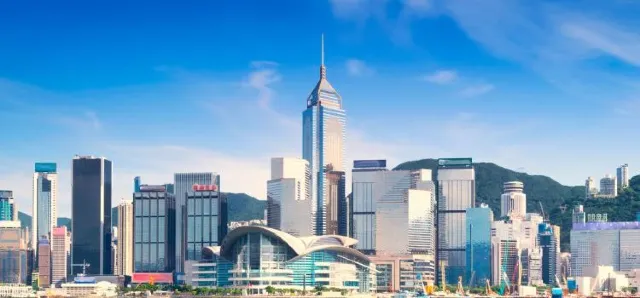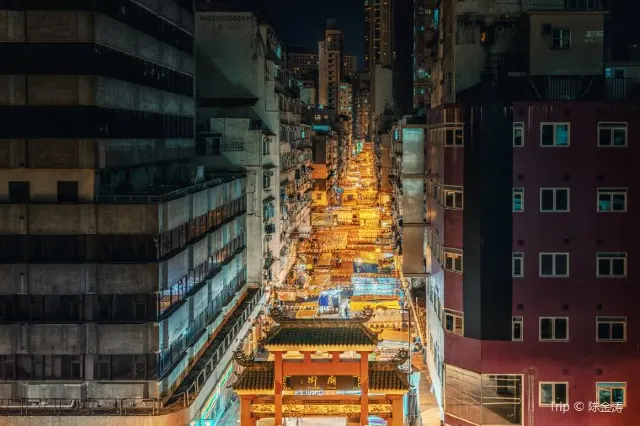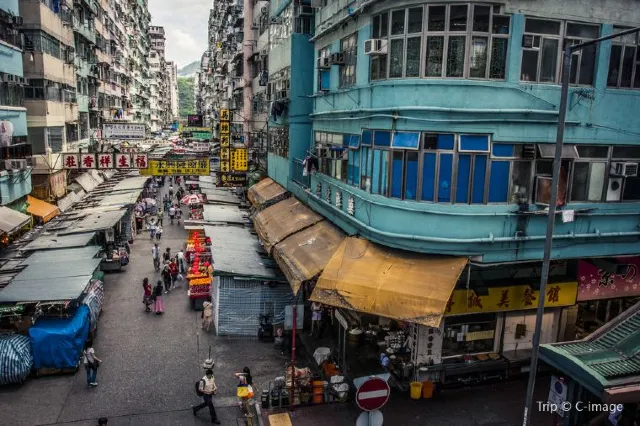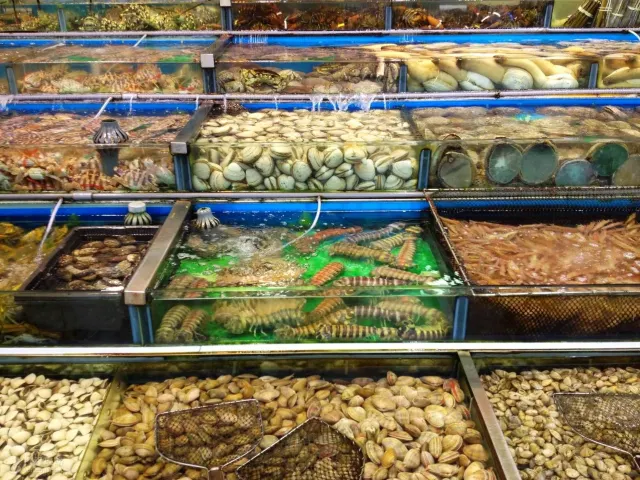Top 8 Local Markets in Hong Kong You Must Visit
Catalogue
- Ladies’Market
- Cat Street Antique Market
- Mong Kok Flower Market
- Temple Street Night Market
- Fa Yuen Street Market
- Sneaker Street
- Jade Street
- Seafood Street Market
Show More
While retail department stores offer everything most people want, when you’re in Hong kong the markets are a must-visit to get your fix of some shopping therapy and experience some of the most vibrant market places in the world. While also being home to some amazing restaurants, Hong kong’s street market culture is an experience in itself. Cheap electronics, clothes, fashion accessories, unique souvenirs, toys, and even seafood, you name it and you find it.

Worth of special mention is the Ladies Market Hong Kong being the best places to pick up some inexpensive yet highly fashionable clothing, jewellery and accessories. While there are plenty of fakes flooding the market, you will also find a number of great designers from the region making their presence felt in the fashion world. Since they are visited by thousands on a daily basis, you need to remember the market places can get pretty crowded and you’ll need a bit of jostling to get to what you need or make your way around at peak hours. Those with finely tuned haggling skills can get some great deals out of their shopping as well! With that said, here is a list of the must-visit markets in Hong Kong during your travel.
The Ladies Market Hong Kong is a one kilometer stretch with over a hundred stalls that sell a range of clothing, cosmetics, watches, bags, home furnishings and more for women of all ages. Although it’s mostly for ladies, there are many stalls that sell clothing and electronic goods for men as well. Located in Mong Kok Kowloon, it lies between Dundas Street and Boundary Street on Tung Choi Street. It is one of the most popular Hong Kong Markets as there’s everything available at bargain prices. It is advised for anyone visiting to assume as a rule of thumb that all the items sold here are at least 20 or 50 percent overpriced so you can put your haggling skills to good use and get your items at a reasonable price.
You will find all kinds of women’s apparel on this stretch which suits the taste of any women. What are also available in plenty are fakes of designer hand bags, watches, footwear and clothes. However be warned that buying fake goods is illegal and although raids do occur once in a blue moon, you could end up in a little bit of trouble. You’ll mostly lose the merchandise and the money you paid for, but otherwise you won’t be arrested. Since shopping is never complete without food, be sure to sample some of the street foods such as meat skewers, curry fish balls, dumplings, tofu or fresh drinks. The Goldfish Market just ahead on Tung Choi road is also an interesting place as you’ll find lots of varieties of fish and other animals such as spiders and snakes for sale.
To get to the ladies market, take any of the MTR stations and get to the Mong Kok station (not the Mong Kok East). Get off the metro and take the E2 exit. A short walk along Nathan Road towards Shan Tung Street will get you to there. The Ladies Market Hong Kong Is open daily from 11am to 11.30pm.
Cat Street Antiques Market on Lascar Row Sheung Wan is popular among tourists as an antique and junk market. The name can be a little misleading for first timers as this market doesn’t sell cats; instead it’s mostly a flea market for inexpensive trinkets, quirky souvenirs and curiosities. The name is a cultural reference and comes from as far back as the start of the colony. During the colonial times, this place was a popular street for stolen items which the Chinese called ‘rat goods’ in Cantonese. Since cats are the ones that search out for rats, the street eventually came to be named as Cat market.
You would come across dozens of stalls that are clustered on the streets with collectables such as brass Buddas, Mao figurines, old coins, vintage Bruce Lee movie posters, ceramic vases and figurines, noodle bowls, jade statues, terracotta warriors and many more things that you can take home with you. Although their quote can be a bit pricey, you can get a good bargain if you’re skilled at it. Even if you don’t wish to buy anything it’s worth the trip to see all that is on display. Although it’s called an antiques market, it’s highly unlikely you will find anything here’s that’s an antique piece, so don’t end up overpaying for something that was mostly manufactured a week earlier in one of the adjacent factories.
Like most of the shops in Hong Kong Markets that sell souvenirs, stalls here open around 11am and remain open at least until 7pm and some are open longer. The market is closed on Sundays and peak on Saturdays. To get there, board the MTR to Sheung Wan Station and take the A2 exit. Follow the Hillier Street and take a right at Queen’s Road. Continue Walking till you reach Ladder Street and take a left. From here it’s a short walk to Upper Lascar Row or Hollywood Road.
Probably the prettiest of all Hong Kong Markets, the flower market is the most fragrant and uplifting streets you’ll walk on your visit in the area. This is the one place where you can find potted plants and flowers of all kinds and even the most-exotic bonsai trees. Although live flowers or potted plants may not be allowed on some flights or through the customs of many countries, the flower market has much to offer to every visitor with green fingers. Along with the live ones, you can find seeds of hundreds of different varieties of flowers and plants, pots, gardening tools, fertilizers, insecticides and more. You can also find other interesting gardening stuff such as soil substitutes which can be mixed with materials such as glass to make impressive planters, artificial plants and flowers which go very well as a table top display and other decorative items you can take home with you.
On your visit remember to take photographs from a distance quickly and move on as most stall owners do not appreciate non-customers blocking the way to others who are paying customers. The flower market is crowded during valentines and many other Chinese festivals. However it sees its peak crowd just before the Chinese New Year’s when families throng here to select plants such as plum blossoms, orchids, peonies and potted orange trees that are believed to attract good luck.
The flower market is open from 7am to 7pm every day. To reach the market with MTR, take the Prince Edward station and exit at gate B1. Continue walking east on the Prince Edward Road. By the time you turn to Sai Yee Street, you start seeing the florists; from here turn to the Flower Market Road.
If you’re in the city and only have time to visit one place for shopping and to try out the local Hong Kong Food Market, then Temple Street is where you need to be! The largest and liveliest of Hong Kong Markets, it is situated in Yau Ma Tei, spanning eight blocks from the Man Ming Lane in the North to the Nanking Street in the south. Although it’s busy during the day, it really comes alive after 7pm and stays open for as long as 2am in the middle of the night. Whether you’re interested in the bargain or not, it’s definitely worth visiting the market just to see the colors, crowds and enjoy some food. It would even be accurate to say that Temple Street is just as much a spectacle as it is a shopping experience.
There are hundreds stores not only on the Temple Street but also the smaller streets that intersect it. You will find fashion apparel for men, women and children which include everything from traditional wear, to designer clothing and knock-off of top brands of hand bags, shoes, watches and electronic items. It’s important to remember however that exchanging the fake good is often impossible and once sold, it’s yours whether it stops working five minutes after you’ve bought or five days! While the street food here is an absolute delight, you will also find many fortune tellers offering palm reading or tarot cards and other tricks.
To see the market packed and in its full glory be there around 8pm. If you’re only interested in shopping then 3pm is the ideal time to visit. To get there, take Exit A at Jordan Subway Station, turn right and walk until the third junction. If you’re coming by the Yau Ma Tei subway station, take Exit C and walk on Man Ming Lane to get to Temple Street.

The Fa Yuen Street goes all the way from Dundas Street to Prince Edward Road and is divided into two shopping destinations. The northern end is where the Fa Yuen Street Market stalls are located while the southern end has upscale stores that sell branded footwear and clothes which gets it the nickname Sneaker Street. Visited mostly by the locals this is a one-stop shopping destination to buy everything related to fashion such as clothes, footwear, watches, bags and other accessories.
The Fa Yuen Street Wet Market located in the Municipal Services Building is a large complex with an indoor sports center and a library with free Wi-Fi. Frequented by the locals is the cooked food center which sells both fresh and dried foods. Inside you will find one of the busiest Hong Kong Food Market
that sells all kinds of meat including chicken, beef, pork, mutton and sea food. Cooked food vendors have plenty of different cuts of chicken and pork for take away. There is also meat from pigeon, duck, geese and other types of birds.
Take the MTR Mong Kok Station and take the Exit B3. Continue up the escalator and walk till you are over Mongkok Road. Turn right and walk along the elevated walkway until you reach the market on your left hand side.

The southern end of the Fa Yuen Street Market is also called as the Sneaker Street. It is among the best in Hong Kong Markets for buying sneakers, shoes and footwear of all kinds for both men and women. The market stretches from Mongkok MTR to Prince Edward Road with many officially licenced showrooms that sell branded footwear ranging from Adidas, Nike, Reebok, Supreme, Skechers and more. Although it’s mostly famous for shoes, the street has stores that sell branded clothes and accessories along with electronic appliances. There are a number of stalls that sell seasonal items such as summer shorts and T-shirts or winter blankets and coats during the other season.
There are also a number of stalls at street corners that sell street food and fresh fruit drinks.
Sneaker Street sees footfall of mostly the residents of the city and fewer tourists as there aren’t any stores that sell souvenirs and other touristy collectibles. However this is the best place to go to buy authentic branded clothes, backpacks, handbags and other apparel. The stores open around 10am and some stay open till midnight. Getting to Sneaker Street is the same as the Fa Yuen Street Market
And all you need to do is walk to the south end of the street.
For those who are unfamiliar with Jade, it is an ornamental mineral that is considered sacred in the East and many other cultures. Jade is used to make ornaments and figurines and depending on the quality and purity of the mineral, the cost can vary from a few dollars to a few thousands. The Hong Kong Markets for Jade is primarily located in Kowloon that features of thousands of ornaments, carvings, pendants, bracelets, trinkets, rings and more made out of the precious mineral. Although it is called Jade street, the market also sells statues, carvings and dolls made out of other minerals, precious stones and Chinese crystals. It’s important to note that Jade market is an indoor market and unless you know where you’re going, it’s easy to miss one of the many entrances into it.
Shopping for Jade jewelry could get a little tricky, especially if you’re unacquainted with it. While most of the stalls carry the same goods, their prices can vary greatly depending on where they are located in the market. The Jade stone is believed to bring good luck to the owner and is hence worn by many locals and elderly in the form of pendants, earrings, rings and bracelets. If you’re unsure of the authenticity of the quality of the stones you’re buying at the market, you can head to the Jade Road which is just adjacent to the market. There are a number of stores here which sell more authentic products and you can buy them confidently. Since these stores close earlier than the market, you need to get there earlier to buy what you need.
A rule of thumb in checking for the quality of Jade is to look for a finely polished stone that is pure green in color and semitransparent; some also have a tinge of yellowish hue. Any tint of brown or grey or ones with a cloudy or opaque are of inferior quality. The Jade Street is open from 10am to 5pm. To get there from the Jordan MTR station, take the Exit A and walk on foot to reach Battery St.
Seafood Street is the other name for a bunch of stores on the Des Voeux Road West that are a major part of the Hong Kong Food Market. Dried seafood is popular in the Chinese cuisine and traditional medicine which makes Seafood Street Market quite a busy place to visit. The story of these Hong Kong Markets goes back to the early 20th century when it was dominated mostly by salted fish that were caught in the local waters. The hawkers who loved there dried fish on the roof tops and sold the on the streets, as waves of modernization hit, residential areas and businesses opened and they had to switch to selling dried sea food.
Today these stores also sell exotic range of dried foods which are also part of the traditional medicine. Although much of it isn’t made there anymore, every morning truck loads of dried produce line up to replenish the stores and you would see the vendors sorting through dried items such as snake skin, black moss, scallops, sausage and more. This market is a great place for you to shop for some traditional Chinese dried foods. Although it’s busy most of the year, the market comes alive on the run up to festivals and especially the Chinese New Year. To get to Seafood Street Market, take the A2 exit from MTR Sheung Station and walk towards Queen’s Road Central.

Trending Travelogues
Popular Trip Moments
Popular Attractions
Popular Ranked Lists
Popular Destinations
Recommended Attractions at Popular Destinations
About



of the year 2024
Site Operator: Trip.com Travel Singapore Pte. Ltd.







